Figure out why you need a shirt
Creating a t-shirt design that represents your brand well can be a challenge. You’ll need to consider what style and personality traits you want your brand to have and how these can be shown in the design. It’s also important to consider what message you want your shirt to communicate and how your target audience will interpret this.
No matter the shirt’s purpose, it’s important to ensure the design reflects your brand’s overall goals and values. Remember these things as you begin the design process, and you’ll be able to create an effective and stylish t-shirt that represents your brand perfectly.
Promotional gifts
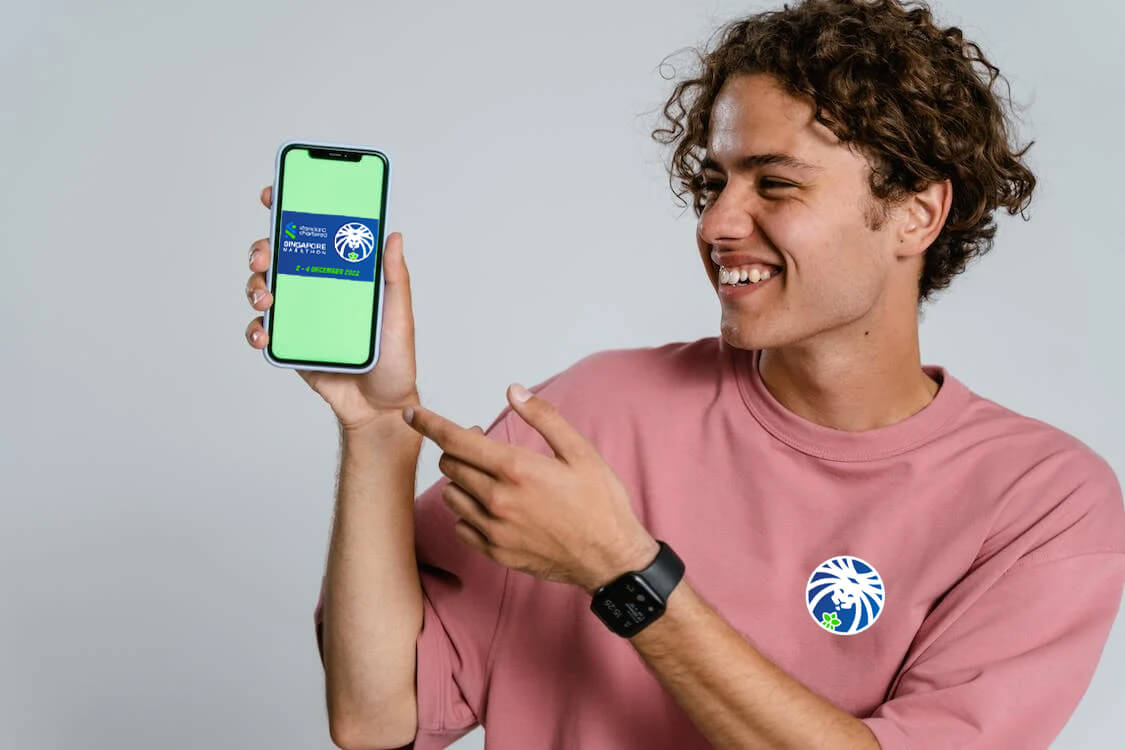
T-shirts are a popular way to promote businesses. They are inexpensive and offer a great way to get your brand in front of potential customers.
Wearing a t-shirt with your company’s name is like walking around with a billboard. And because people usually wear t-shirts in relaxed settings, they can help make your brand look more approachable.
To maximize the impact of promotional t-shirts, ensure they are well-designed and made from high-quality materials.
Internal company usage
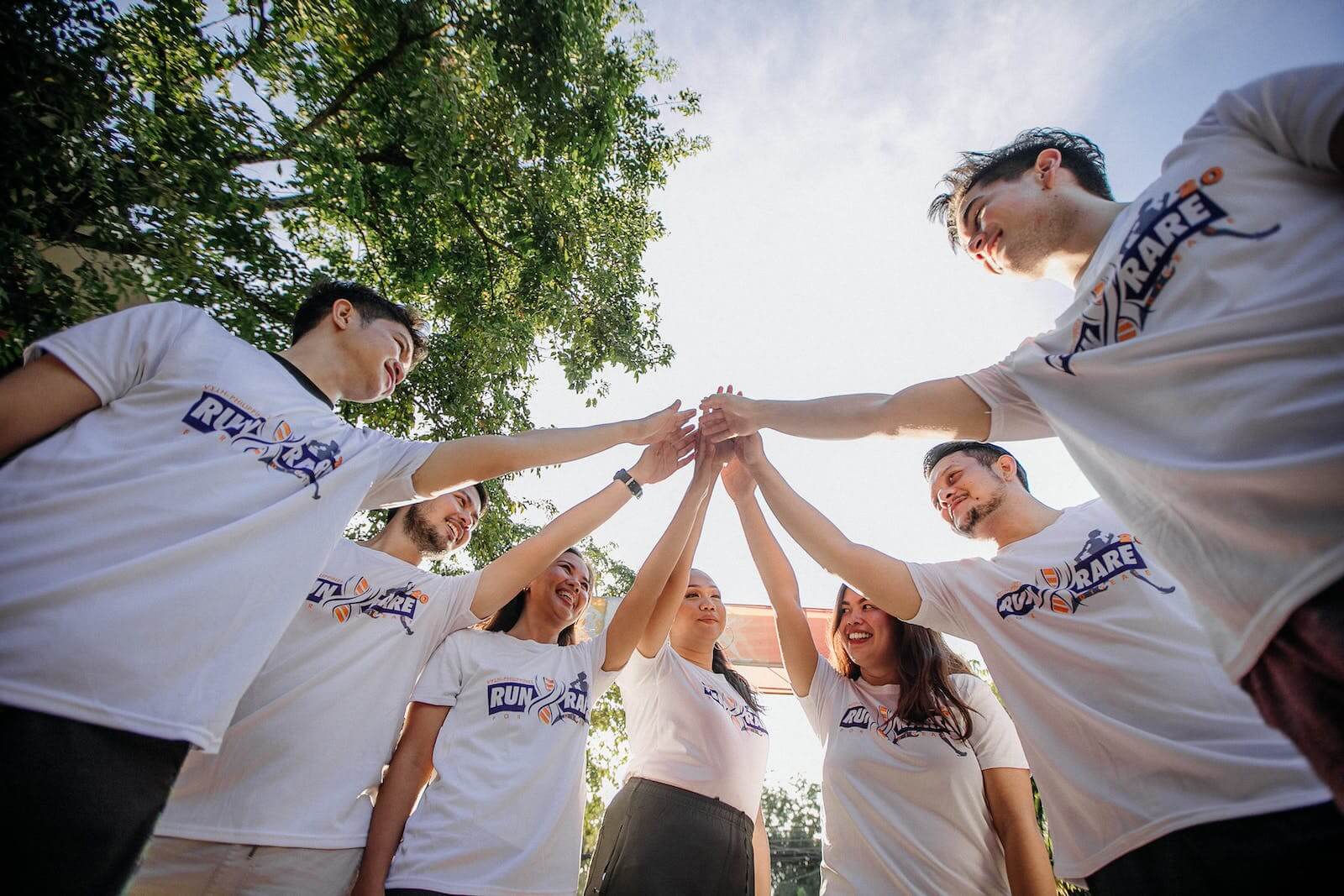
Employee happiness is critical for a successful firm, as any business owner knows. One way to keep employees happy is to provide them with company shirts. Not only do shirts help to promote a sense of solidarity and team spirit, but they also show appreciation for employees’ hard work.
In addition, shirts can also serve as a uniform, making it easy for customers to identify employees and create a professional appearance. Whether used for promotional purposes or to show appreciation, company shirts are a simple way to boost morale and keep employees happy.
Merchandise
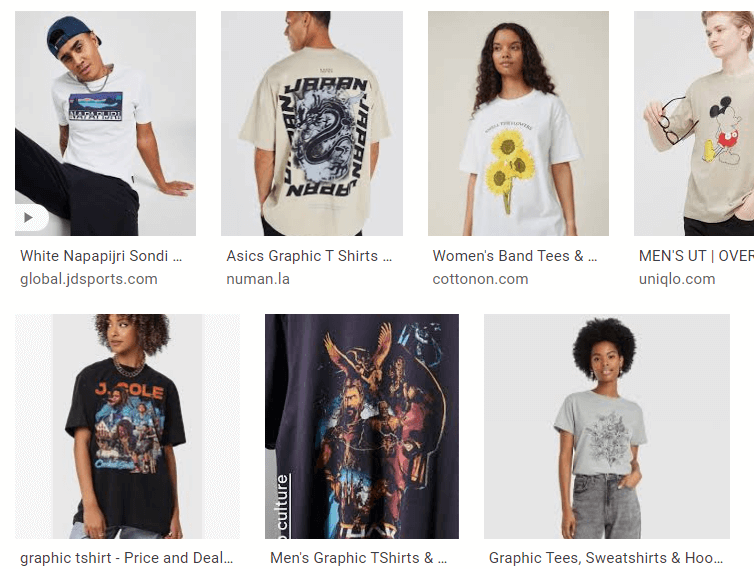
The style, marketability and business strategy of your t-shirt are important factors to consider before selling. Always remember your target audience and the kind of message you want your shirt to send.
- Is your shirt design something that will appeal to your target demographic?
- Is it something that they would want to wear?
- It would be beneficial if you also thought about how you would sell your clothes.
- Will you sell them online, in stores or at events?
Each technique has its own set of benefits and drawbacks.
And finally, don’t forget to think about your pricing strategy.
- How much will you charge for each shirt?
- Will you offer discounts for bulk orders?
By taking the time to answer these questions, you can develop a sound business plan for selling your t-shirts.
Event souvenirs
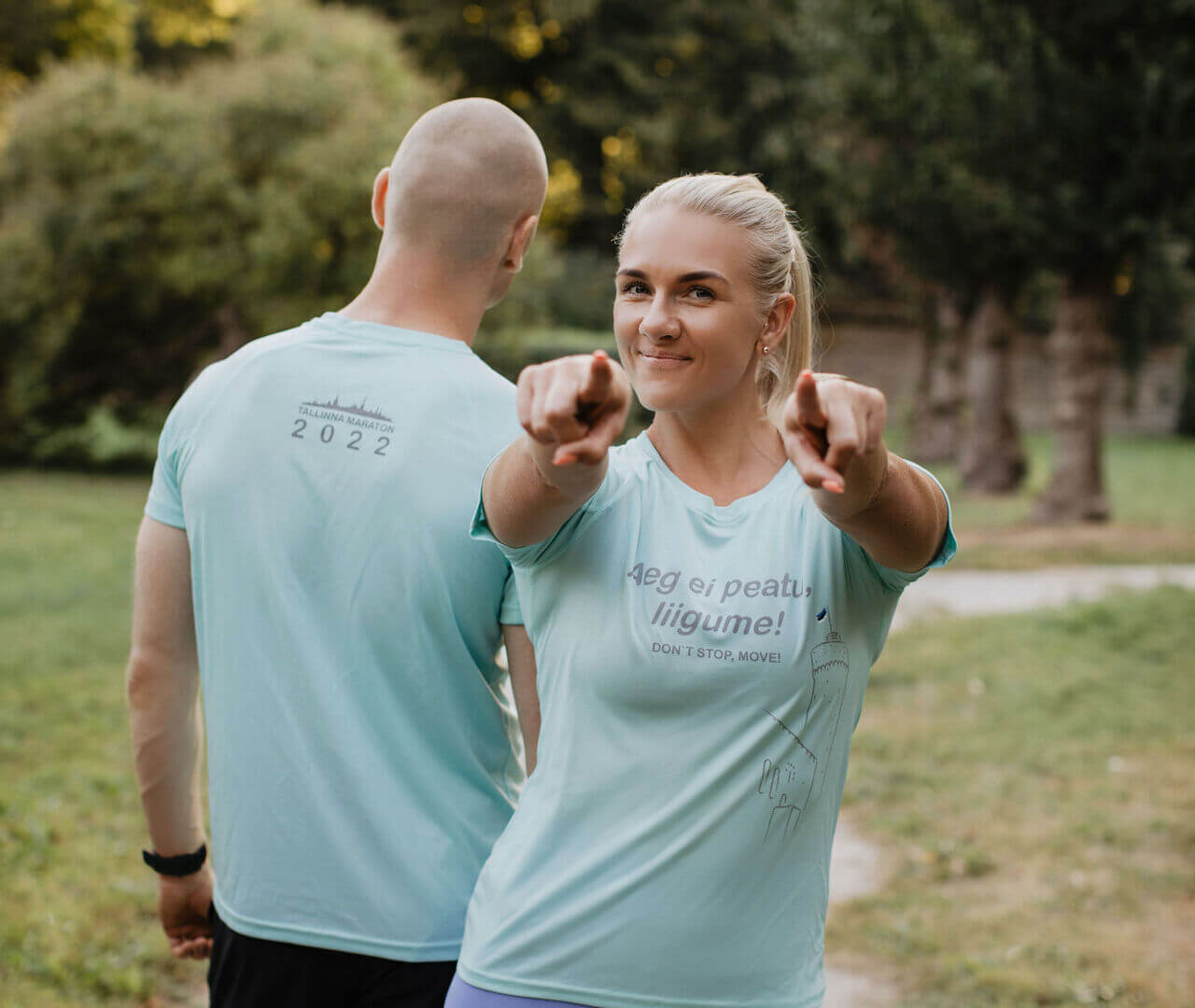
T-shirts are always a fantastic choice for special events, especially if they have your company or organization’s logo.
After establishing your goals, you can determine which aspects of your t-shirt design to prioritize. To illustrate, fashion might not be as vital for employee gifts as for merchandise tees. Create a design that works best for you and your needs.
Define your budget and quantity
What is your price range for a customised t-shirt? What is your price range for a customised t-shirt? What is your price range for each shirt? This will have an impact on the sort of outfit and design you choose.
If affordability is a factor for you, choose a less costly shirt material and opt for a simpler design. If price isn’t as big of an issue, choose a higher quality shirt and pick a more detailed pattern.
You’ll also need to consider how many shirts you want in addition to your budget. Do you want a small number of T-shirts for a party or special event, or do you need more for your business or organization?
The quantity of T-shirts you’ll need also influences your design options. If you require a few T-shirts, you might be able to afford a more intricate design. However, if you need a large number of shirts,
Know your printing options
Before you choose a t-shirt printing method, consider how much it will cost, how it will look, and how long production will take into account. The more informed you are about your choices, the easier it will be to pick one.
Screen printing
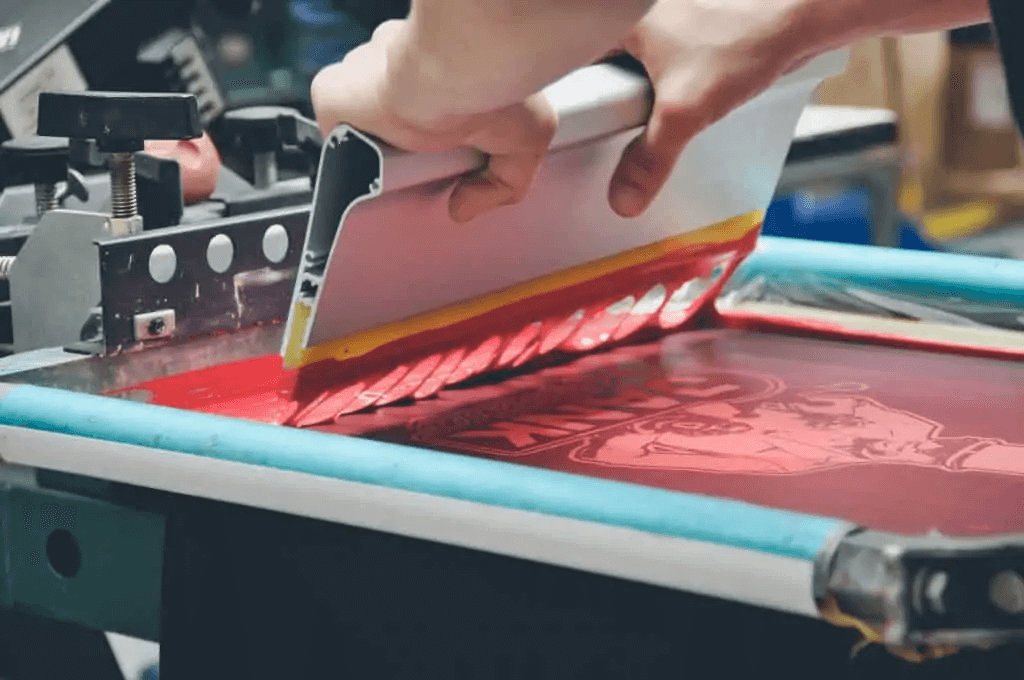
Screen printing is a popular technique that entails creating a stencil of an image and then using that stencil to apply ink to a substrate, typically fabric.
- The major benefits of screen printing are that it is versatile and produces clear, vibrant images. Furthermore, screen printing is quick and efficient, making it ideal for mass production.
- The major drawbacks of screen printing are that it is time-consuming and expensive, owing to the need for multiple screens for each color; however, it is still a popular printing method, particularly for items like t-shirts.
Vinyl graphics
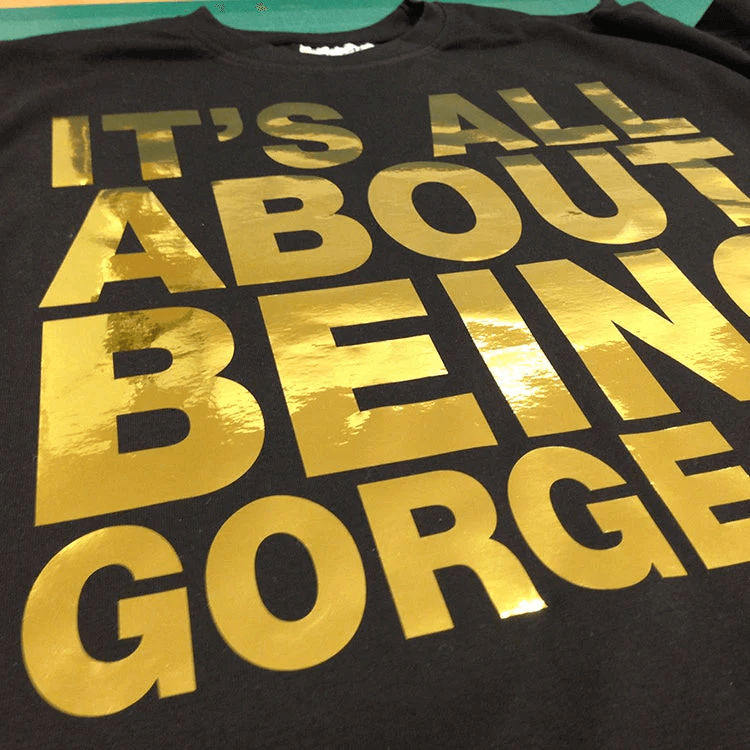
Vinyl transfer printing is not as long-lasting print as screen printing. But it doesn’t have limited to graphic designs and it is often used in complex pattern designs and simple words as well, making them ideal for outdoor or informal use.
On the other hand, vinyl is more expensive than other types of printing and may be more difficult to remove or repair if it gets damaged.
Direct-to-garment (or print-on-demand)
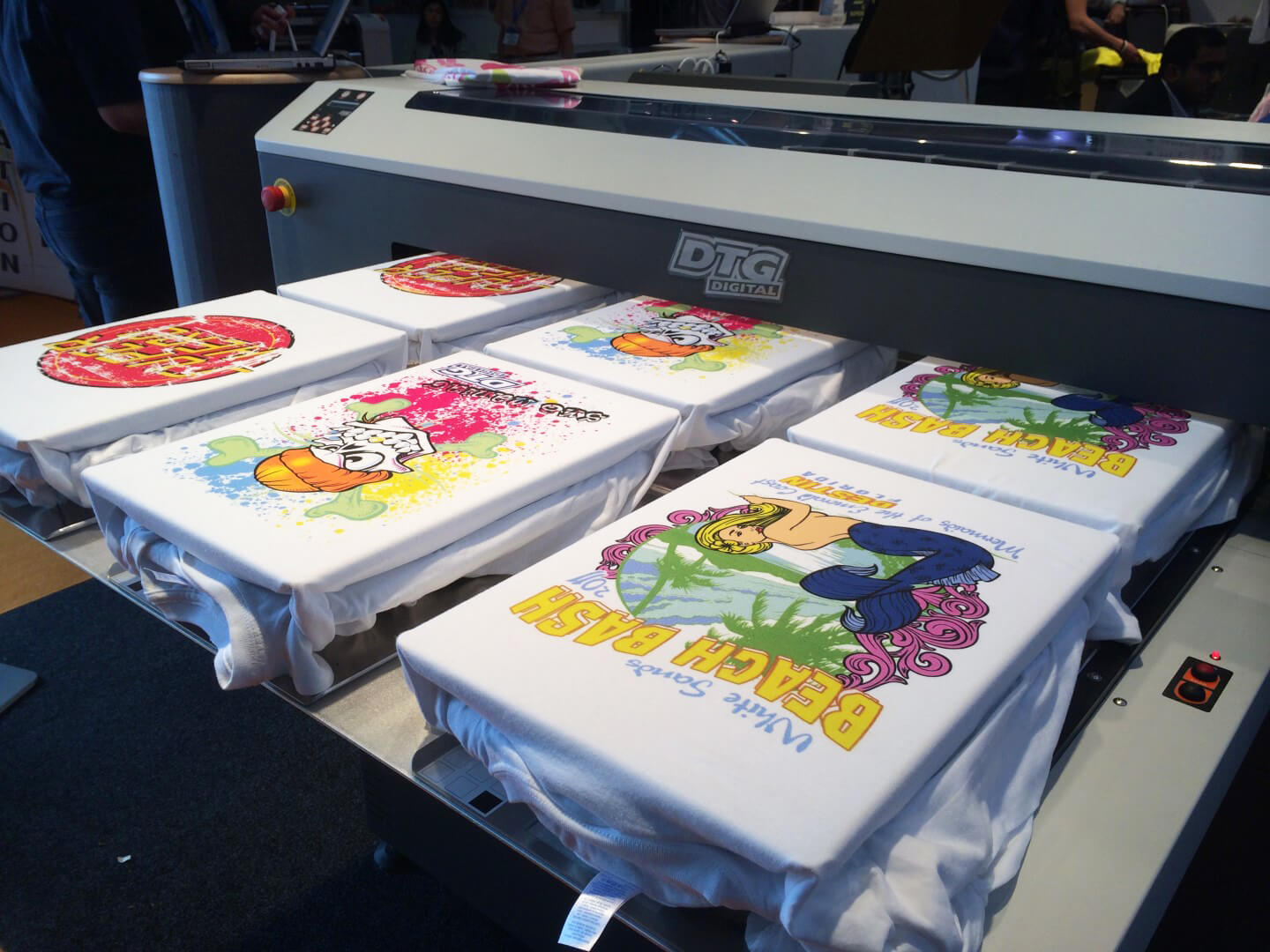
A newer method for printing on fabric that has become available is called direct-to-garment (DTG) printing. This operates similarly to inkjet printers but instead prints directly onto the fabric.
- There are several advantages to DTG printing compared to other methods, including speed and efficiency. With DTG printing, you can also print on multiple fabrics at once, and the images tend to be clear and long-lasting.
- On the other hand, DTG printing also has a few cons. Most significantly, it’s pricier than other methods. Likewise, DTG prints aren’t as tough as others–meaning you have to be more careful with them.
DTG printing is an excellent alternative for individuals who want high-quality, quick prints, but it may not be the greatest solution for everyone.
Brainstorm your design concept
Congratulations on perfecting your design!The following stage is to have some fun with the t-shirt design. Remember that the more you put in today, the better the returns you’ll see afterwards.
T-shirt types
T-shirts come in different shapes and sizes, but only a few main types exist.
The first and most frequent type of t-shirt is the crew neck shirt. These shirts have a band of fabric around the neckline to keep them from moving too much. They are often seen as more casual than other types of t-shirts.
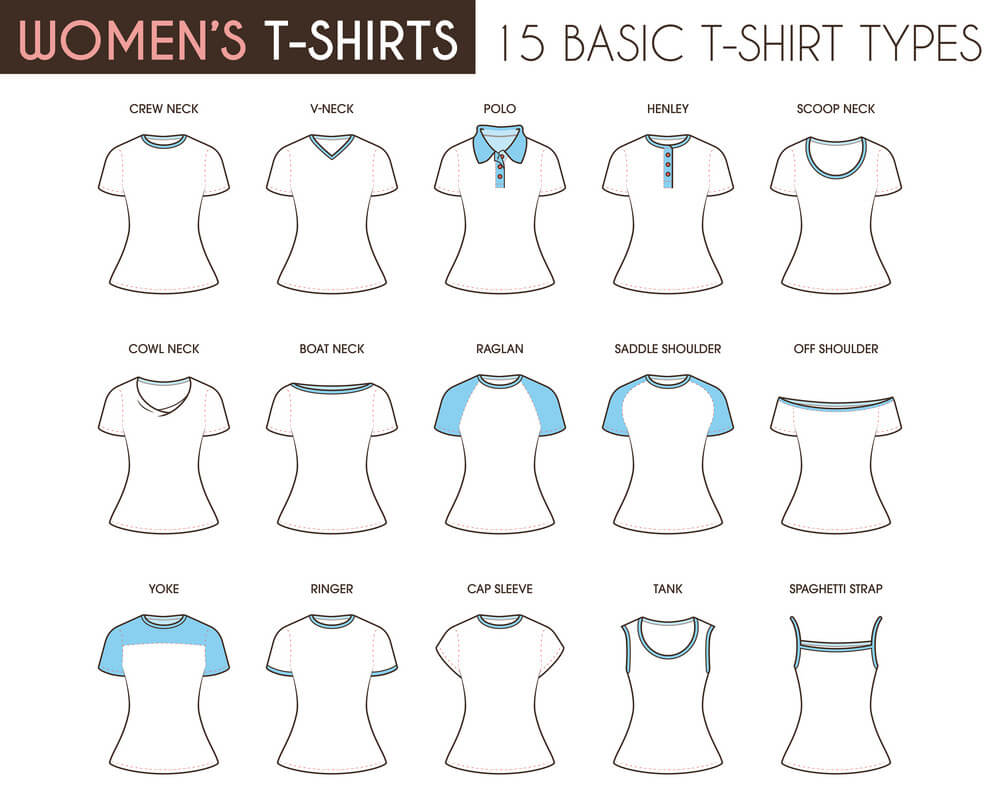
The second type of shirt is the v-neck. These have a neckline in the shape of a V, allowing for more breathability. V-necks are often more formal than crew necks but can also be worn casually.
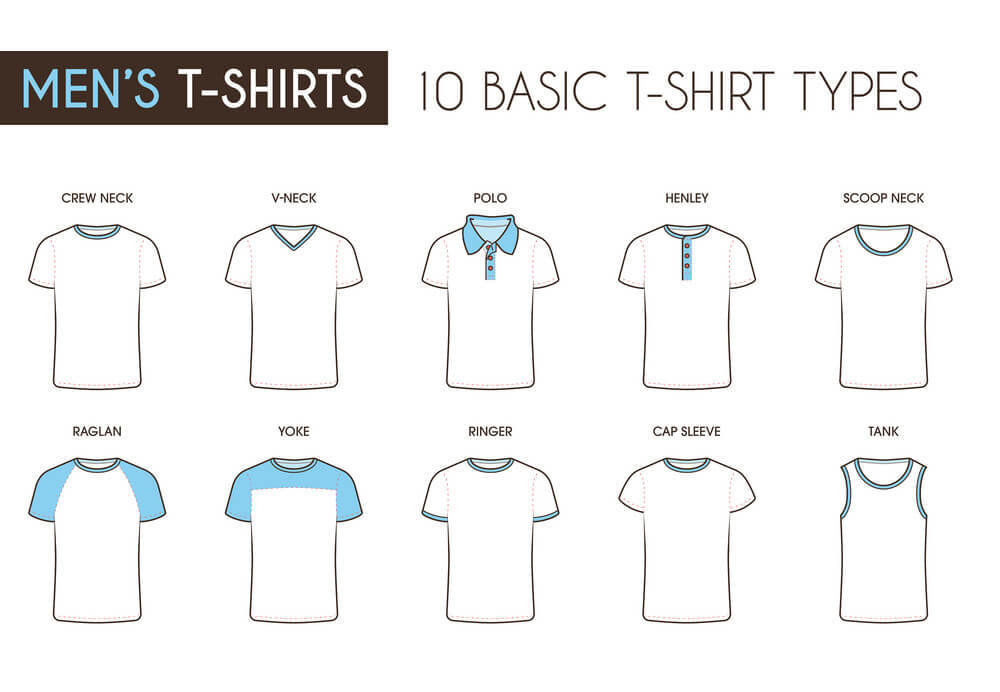
Tank tops are the third style of t-shirt. These are sleeveless clothing typically worn in the summer or during exercise. Tank tops are usually seen as very laid-back shirts.
Finally, there are t-shirts with button-down collars. These are slightly more formal than other types of t-shirts and are often worn as part of a uniform.
Style and imagery
For a shirt design, style and imagery are key. Think about your target market and what message you want to communicate with the shirt. Are you going for a more professional look or targeting a younger demographic? Once you’ve decided on this, you can start thinking about specifics like colors, font, and images. Remember that the shirt is the first impression people will have of your brand.
T-shirt typography
Choosing the right font for your T-shirt designs is essential to creating a shirt that conveys your brand’s message.
- Times New Roman – A classic serif font that is easy to read and conveys a sense of sophistication.
- Arial – A clean and simple sans-serif font that is very versatile.
- Courier New – Another classic serif font that is easy to read but has a slightly more modern feel than Times New Roman.
- Comic Sans – A fun and playful font that can add personality to any design. It should, however, be used carefully because overuse might make it appear silly.
- Impact – A bold and attention-grabbing font that is perfect for making statements. However, it should also be used sparingly as it can be difficult to read when used for large amounts of text.
Color in t-shirt design
Color is important when it comes to designing t-shirts. Each color can evoke a certain emotion, which can help communicate what a brand is about. When choosing colors for fabric and print, it’s important to remember how the colors will work together.
The most inexpensive way to print a design is by using colors close to what you want, though they may not be an exact match. You can get an exact color match using Pantone or custom blended CMYK, but it will be more expensive. Check with your printer to discover what options are available.
Specialty printing techniques
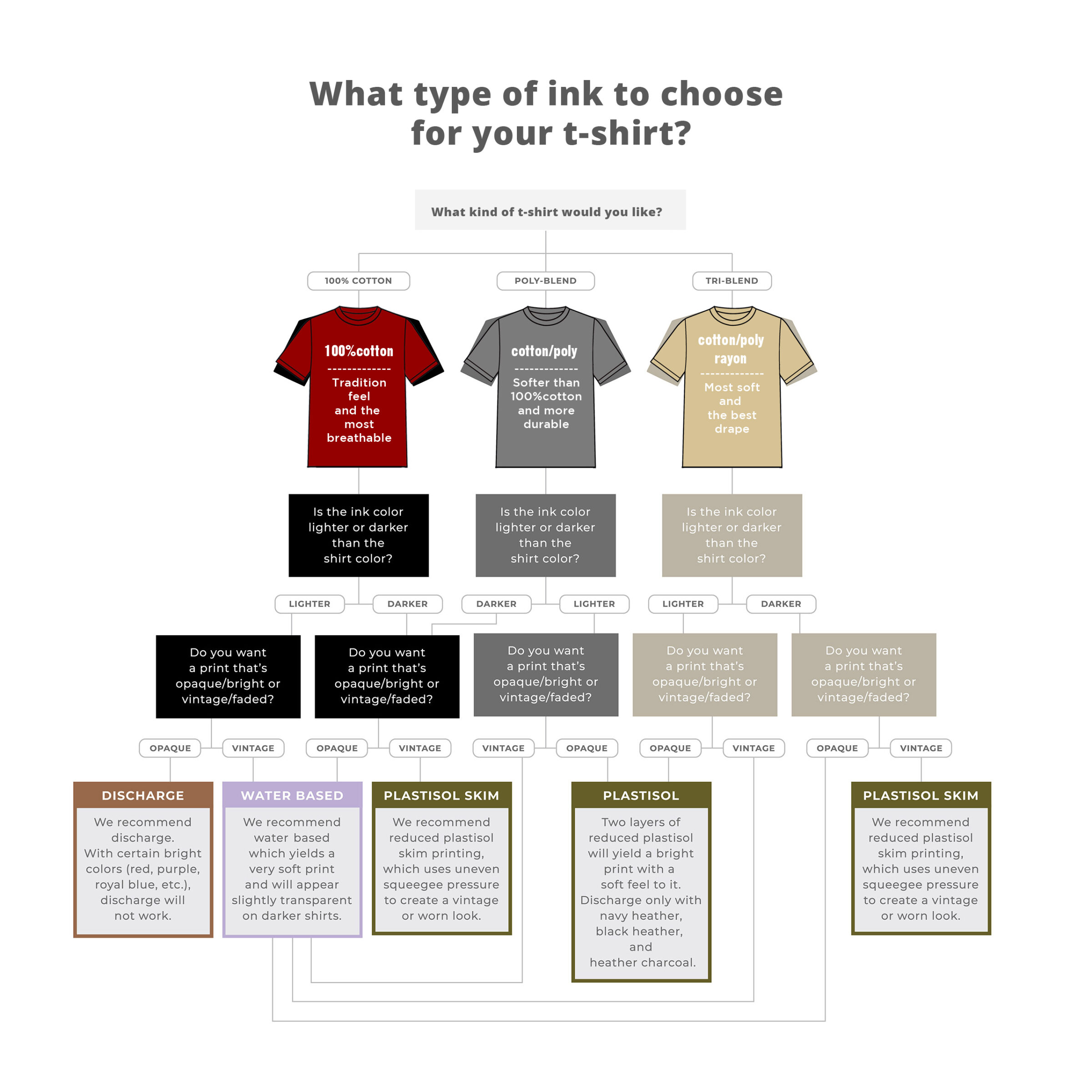
T-shirts are just like any other printing material in that they have their own set of unique print ink possibilities.
- Plastisol — Plastisol is a printing ink that contains PVC, making it thicker than most inks. It’s the standard ink used for screen printing.
- Foil — Foil is a unique material that is both shiny and reflective. It has many uses, from packaging to art projects.
- Novelty — If you’re looking for something new and exciting, look no further than our glittery, holographic or fuzzy fabrics!
- High-density ink gives your print job a three-dimensional appearance that stands out from the shirt.
- Gel — Achieves the same high-density look as a regular hair product but a wetter appearance.
- Water-based fabric protection is virtually undetectable, so you can still enjoy the feel of your favorite fabrics.
Find a designer
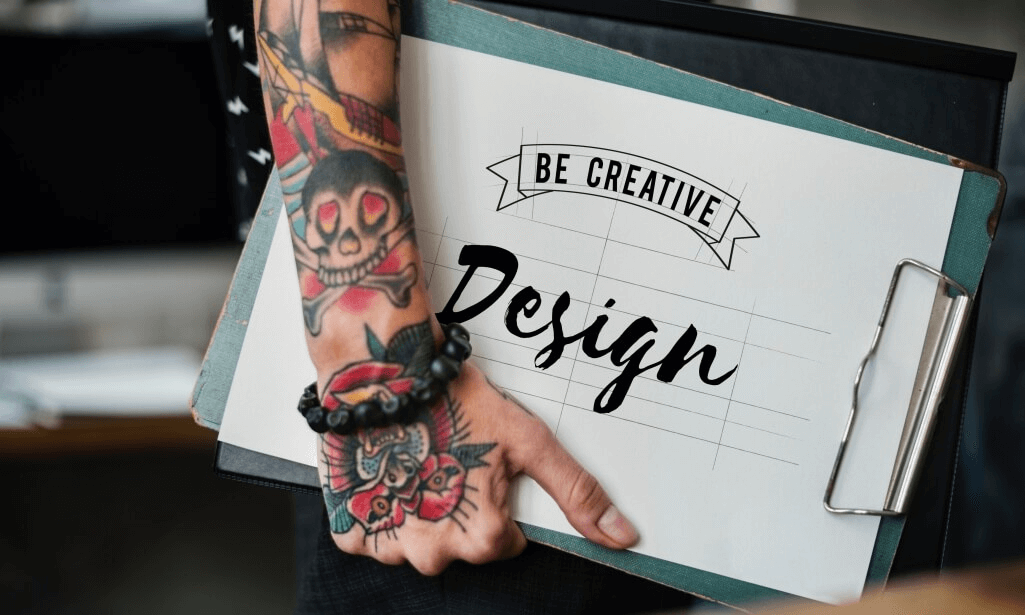
Do you have design expertise? Get to work! If you don’t, don’t worry. There is a slew of experts eager to breathe life into your concept.
DIY
By taking the DIY route, the main advantage you have is price. If you’re tight on budget, this may be your best decision. From a design perspective, you’ll have much more freedom; however, remember that professionals are aware of the technicalities of designing a t-shirt. If acronyms like CMYK make you anxious, it may be better to hire someone who is already knowledgeable about the process.
Hiring a pro
Hiring a professional has its perks–you won’t have to learn about marketing, branding, and graphic design. Find a designer with a compatible personality and design style to ensure a great outcome. You can also try working with multiple designers at once by hosting a T-Shirt Design Contest on Lezhou garment.
To get the perfect t-shirt design, provide your chosen designer(s) with a clear vision. This includes information and inspiration regarding your design ideas, messaging, audience, color palette, logos, and visual style. Images can be helpful to demonstrate the mood and aesthetic you’re going for. By giving them all the necessary details upfront, you’re more likely to end up with a design you love.
Evaluate your design
Now that you’ve gathered your options, it’s time to start narrowing them down. Please look at each design and consider how well it meets your initial requirements.
- Is the design eye-catching and memorable?
- Does it communicate the right message?
- Will it work well on the intended item?
You should also consider your budget at this stage. If you’re dealing with a limited amount of colors, make sure the design you choose can be reproduced satisfactorily within those limits. Once you’ve selected your favorite options, give feedback to the designer so they can fine-tune the designs and create an even better second batch for you to choose from.
Get the right files from your designer.
You’ve got the perfect t-shirt design. Hell yes! Now go back to that information you got from your printer and check to ensure you have the right files.
Most designers will provide you with a vector file (.ai or .eps), but some might give you a raster file (.psd or .jpg). Ask for a vector file if they give you a raster file instead.
A vector file can be scaled up or down without losing quality, but a raster file will get blurry if you try to make it too big or small.
Once you’ve got the right file, send it over to your printer and get those shirts made!
Find a kick-ass printer.
Now that you’ve got your design ready, it’s time to find a printer that can do it justice. When selecting a printer for your t-shirts, there are a few factors to consider.
- First, consider the printing method. Screen printing is great for large orders but can be pricey for smaller runs. Direct-to-garment printing is more expensive per shirt, but it’s perfect for smaller orders or designs with multiple colors.
- Second, think about price. You don’t want to overspend on your shirts, but you also don’t want to sacrifice quality. Look for a printer that offers a fair price per shirt, especially if you plan on ordering in bulk.
- Lastly, consider extras and discounts. Many printers offer discounts for larger orders, so be sure to ask about that. And if you’re looking for additional features like rush ordering or design help, ask about those.
Wrapping up
T-shirt printing has become increasingly available and easy to use, and more businesses are catching on and taking advantage. However, success in this design area is not guaranteed unless you know what you’re doing. Hope this post can give you all of the information you need to create gorgeous t-shirts that will sell like hotcakes.
